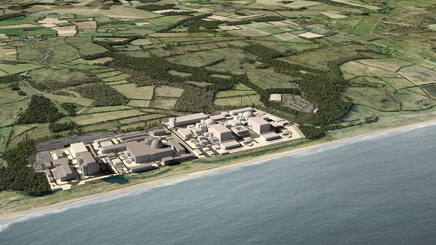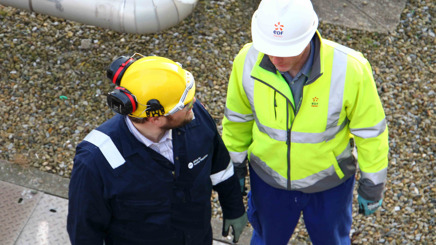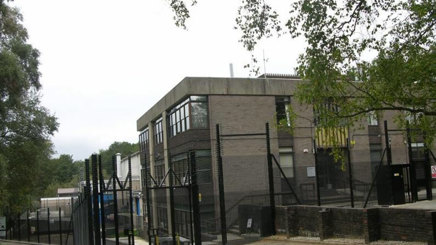 Nuclear site licensing is a statutory regime under the Nuclear Installations Act 1965 (NIA65). In order to assure the safety of nuclear installations in the UK, we work on a system of regulatory control based on a robust licensing process by which a corporate body is granted a licence to use a site for specified purposes. The nuclear site licensing regime also implements the international requirements for operators of nuclear installations to hold nuclear third-party liability cover.
Nuclear site licensing is a statutory regime under the Nuclear Installations Act 1965 (NIA65). In order to assure the safety of nuclear installations in the UK, we work on a system of regulatory control based on a robust licensing process by which a corporate body is granted a licence to use a site for specified purposes. The nuclear site licensing regime also implements the international requirements for operators of nuclear installations to hold nuclear third-party liability cover.
Our 'Licensing Nuclear Installations' (PDF) guide provides an overview of the nuclear licensing regulatory regime, including the requirement for licensing and the processes for licensing, relicensing and delicensing nuclear sites. It explains how and why we license nuclear installations.
The nuclear site licence
The nuclear site licence we grant is a legal document, issued for the full life cycle of the facility. It contains site-specific information, such as the licensee's address and the location of the site, and defines the installations permitted under the licence. Such installations include nuclear power stations, research reactors, nuclear fuel manufacturing and reprocessing, and sites where radioactive matter is stored in bulk.
A nuclear site licence must:
- Clearly define the licensed site and the licensed installation(s); and
- Have attached to it such conditions as ONR deems necessary in the interests of safety.
The licence conditions
NIA65 requires us to attach conditions that it considers necessary or desirable in the interests of safety to each nuclear site licence, and we may also attach conditions on the handling, treatment and disposal of nuclear matter. A set of 36 standard licence conditions (LCs), covering design, construction, operation and decommissioning, is attached to each licence. The LCs apply throughout the life cycle of a licensed nuclear site and are applicable to design, procurement, construction, commissioning, operation, maintenance, modifications, decommissioning, etc.
The LCs require licensees to implement adequate arrangements to:
- prevent unauthorised entry
- receive and store nuclear matter on the site
- preserve relevant documents
- respond to incidents and emergencies
- train staff
- perform safety-related duties
- produce and review safety cases
- assess radiological dose
- control construction, modifications and commissioning
- produce operating instructions
- carry out maintenance, inspections and tests
- minimise radioactive waste production
- decommission plant
- control organisational change
Licensable nuclear installations
NIA65 requires a nuclear site licence to be in force before a site may be used for the purpose of installing or operating any nuclear reactor (excluding a reactor comprised in a means of transport) or any other kind of installation that has been prescribed. Such kinds of installations are prescribed in the Nuclear Installations Regulations 1971 and, in summary, are those for:
- Manufacturing fuel elements from enriched uranium or plutonium;
- Producing enriched uranium, plutonium, or alloys or chemical compounds containing enriched uranium or plutonium;
- Incorporating enriched uranium or plutonium in devices designed to form part of a nuclear assembly or designed for irradiation in a nuclear reactor;
- Producing neutrons in a nuclear assembly containing enriched uranium or plutonium in which a controlled chain reaction can be maintained with an additional source of neutrons;
- Processing irradiated nuclear fuel;
- Storing fuel elements manufactured from enriched uranium or plutonium, irradiated nuclear fuel or bulk quantities of other radioactive matter associated with nuclear fuel;
- Extracting plutonium or uranium from irradiated matter, or enriching uranium; and
- Producing from nuclear matter isotopes for industrial, chemical, agricultural, medical or scientific purposes.
Public body notification
When considering applications for nuclear site licences, we are able, in certain circumstances, to exercise a discretionary power provided by section 3(4) of NIA65 to direct a licence applicant to serve notice on certain public bodies. This is known as public body notification.
Is this page useful?
Thank you for your feedback.
Thank you for your feedback. To help us improve our website we’d like to know more about your visit today. Please provide more details via our website feedback form.
Thank you for providing your feedback.


